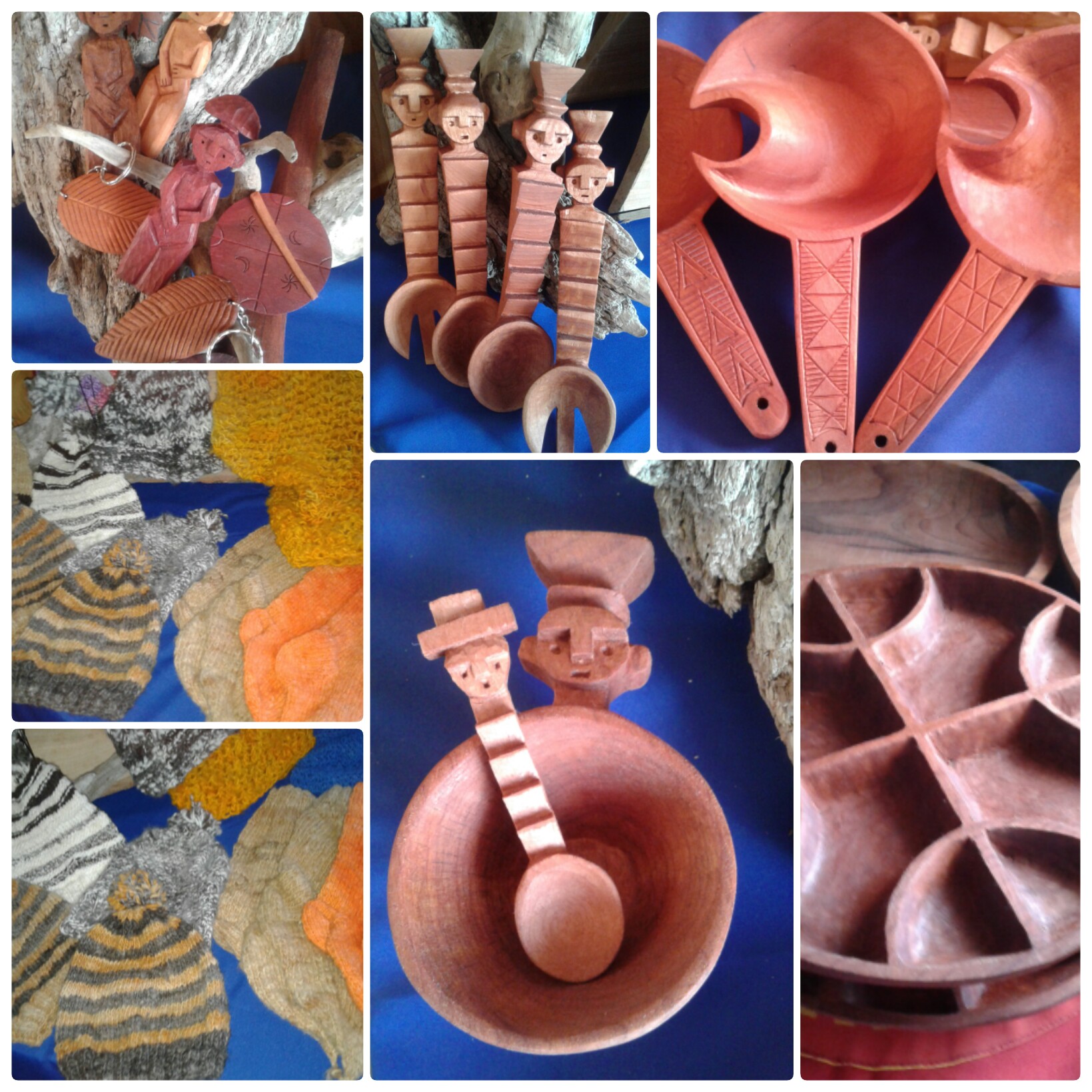
Introduction
The Foye Inalafken Group represents the Mapuche community, consisting of 22 families, located along the northeast shore of Neltume Lake. The group itself is made up of the most involved members within the community. This group makes up for about 80% of the activity in the area. In Mapudungun, the language of the Mapuche people, Foye Inalafken means the Canelo along the lakeshore. This name refers to a specific area of the shore where canelos (Drymis andina) grow.
History
Hundreds of years ago, the families that live in Inalafken were part of the Wallpapu, a large area of land located in the Araucanía Region to the south of the Biobio River, including parts of present-day southern Argentina. The Wallpapu was a shared land, existing without any form of territorial divisions. European colonization pushed the Mapuche all the way to the Andes Mountain Range, while the colonizers settled in the valleys and foothills. For generations, the Mapuche communities used goods made from wood, wool, and leather to trade amongst themselves and, later, to barter with the Europeans. They made blankets, sweaters, textiles, wooden utensils, and furniture to trade for food, tools, domesticated animals and other products. The trading was carried out with individuals that lived between Panguipulli and Choshuenco. Some Mapuche traveled to merchants in Argentina, crossing the Cariñin Pass throughout the summer months.
Ancestral Voyage
Our event is 100% free and is organized every year by the families of the Inalafken community. During the two day event, we navigate through roughly 22 km of waterways, including tributaries of the Cuacuá River and Lake Neltume. We travel in a wampu throughout both the voyage and the Mapuche community activities. The wampu is a traditional Mapuche vessel, made from the single trunk of a laurel tree and carved entirely by hand. A wampu is approximately 5 meters in length and is able to carry many people. This is but one of the ways we will share our history and the importance of our natural surroundings. We offer historical knowledge of the region and will visit the Cuacuá River (named for the sound made by the frogs of the area), Neltume Lake, and the wetlands located near the northern shore of the lake.
In February of 2011, we organized the very first presentation of the Ancestral Voyage. The foundation of this activity relied heavily on the assistance and support from members of the local community and the general public. Its inception began as a response to a proposed hydroelectric project that would have destroyed our natural surroundings; changing our community and the ecosystem of Neltume Lake irreversibly. In February of 2018, our event was carried out for the fifth time in its history. The date of the annual event is not fixed. We determine the dates that work best each year in February; however, the planning for the trip begins in October. If you are interested in knowing more about our activities, the dates, or how to register, please send us an email at navegacionancestral@gmail.com.
Community Fair Kiñe Newen Mapu
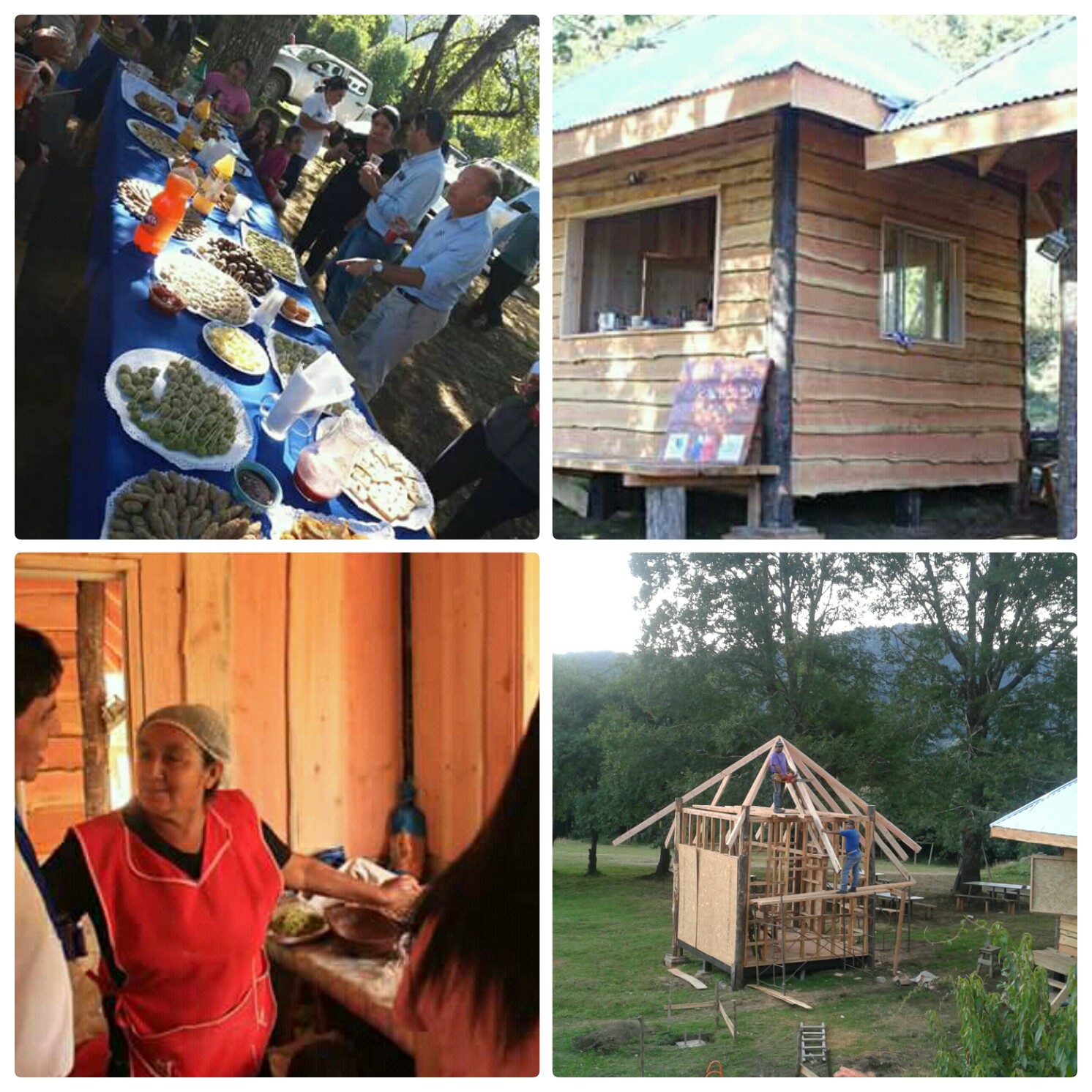
Hours of Operation: 10:00am – 9:00pm every day December through March
Location: Northern area of Lago Neltume on road T-29
Information: 9 6768 2615
Our traditional food vendors and artisanal market is named Kiñe Newen Mapu, which means «A Force for Nature» in Mapudungun. The market was started with support from FOSIS and the Huilo Huilo Foundation, and in 2019, we will be able to inaugurate our completely permanent location which has been under construction for nearly a year.
The market is open every day of the week from December through March, between 10 am and 9 pm. We have approximately seven (depending on the availability of our artisans and cooks) different stalls with different foods typical of Mapuche culture, such as stews, soups, fish, empanadas, tortillas, handmade bread, and kartutu (a traditional Mapuche whole grain bread) and artisanal products made from wood, wool, leather, and other natural materials.
Artisanal Products
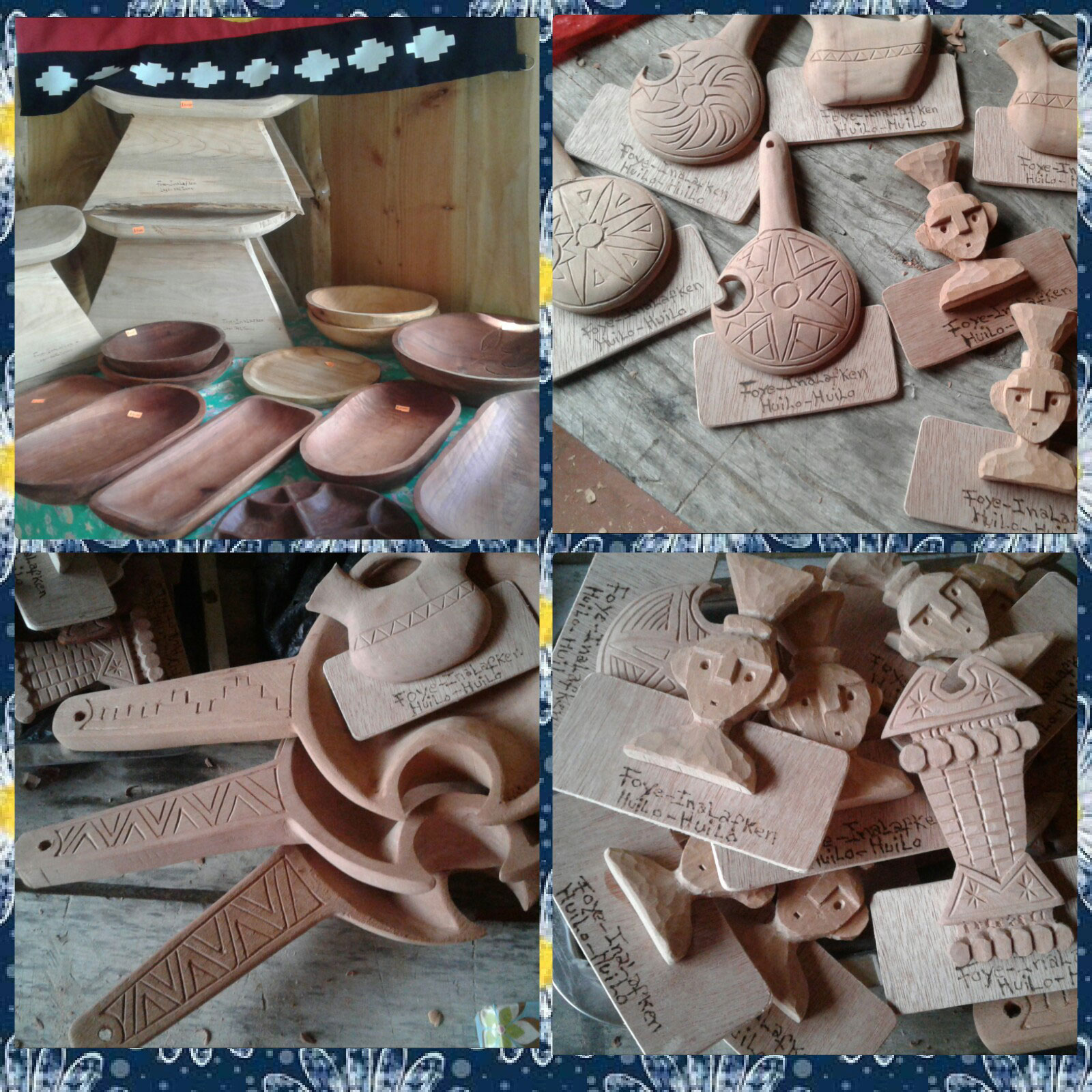
The Inalafken Community began an artesanal workshop in 2009. In the beginning, the community organized the workshop into a formal association, which later disbanded after only three years. The Foye Inalafken Group resurrected the association, representing the most active members of the community, and continued the artesanal workshop. The group creates around 80% of the products sold from the community; however, they also include products made by community members not formally in the group. The workshop makes products out of wood, wool, and leather through techniques that have been passed down from generation to generation for at least the past 100 years.
Wood
The Foye Inalafken artisans use wood that comes from our own land. We primarily use wood from trees that have already fallen in the surrounding forests from natural causes. Specifically, we utilize Raulí (Nothofagus alpina), Laurel (Laureliopsis philippiana), and Lingue (Persea lingue) in our products. We seek out naturally deceased trees in order to continue the tradition of conserving the native forest. The designs used by our artisans have been passed down by our ancestors. We form the wood into plates, utensils, chairs, magnets, Kultrun-style trays, and Wanko (Mapuche footstool).
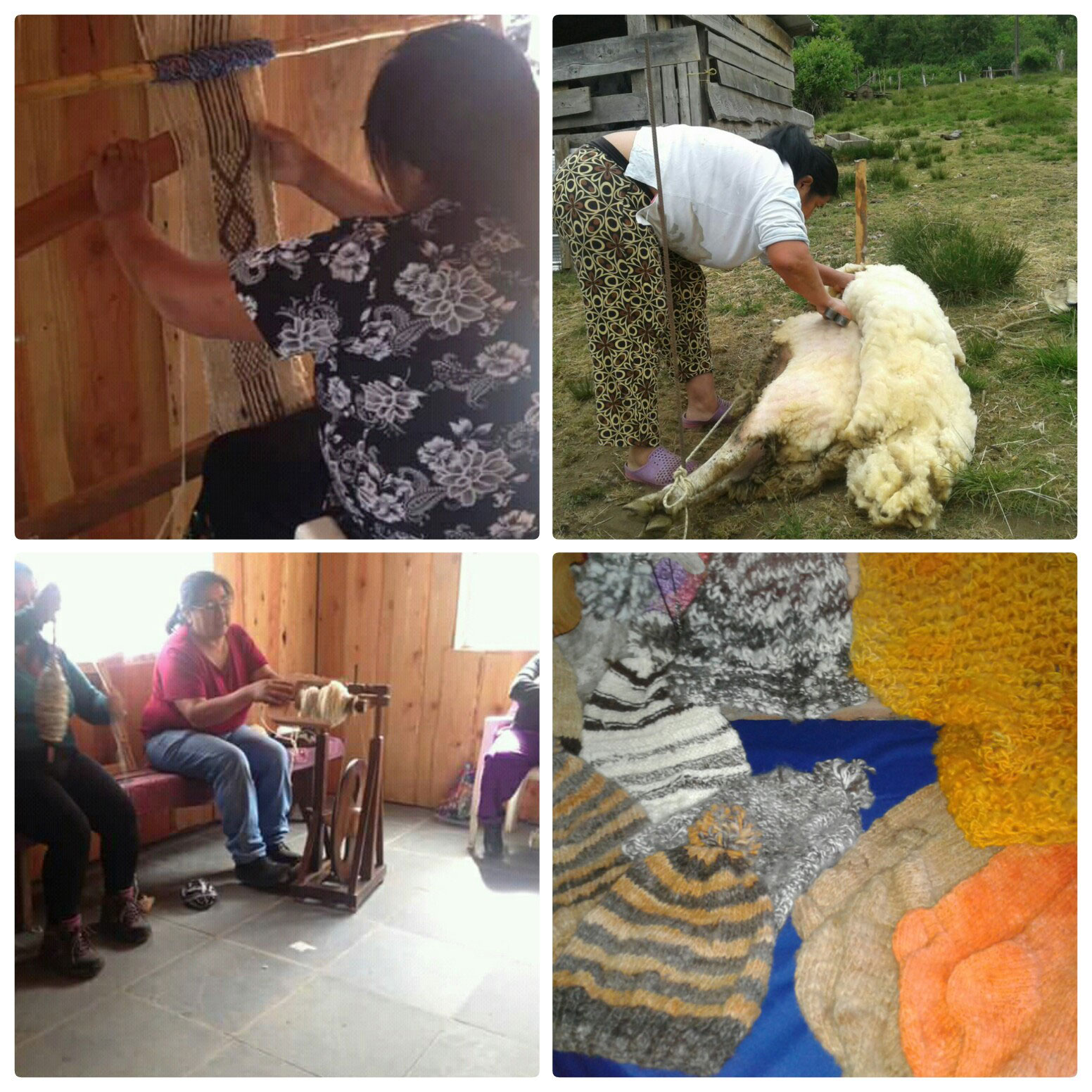
Wool
The wool artisans carry out the entire process, from acquiring the wool from the animal to the final product. From our ancestors, we have learned to shear, wash, clean, and spin wool into string. We naturally dye the wool into the desired color, creating a variety of colors using natural materials found within the forest. These woolen works of art include socks, sweaters, hats, table runners, blankets, textiles, and carpets.
Leather
Our leather products primarily come from the leather of local cows. We cure the hides into leather, further processing them and creating works such as purses and wallets.
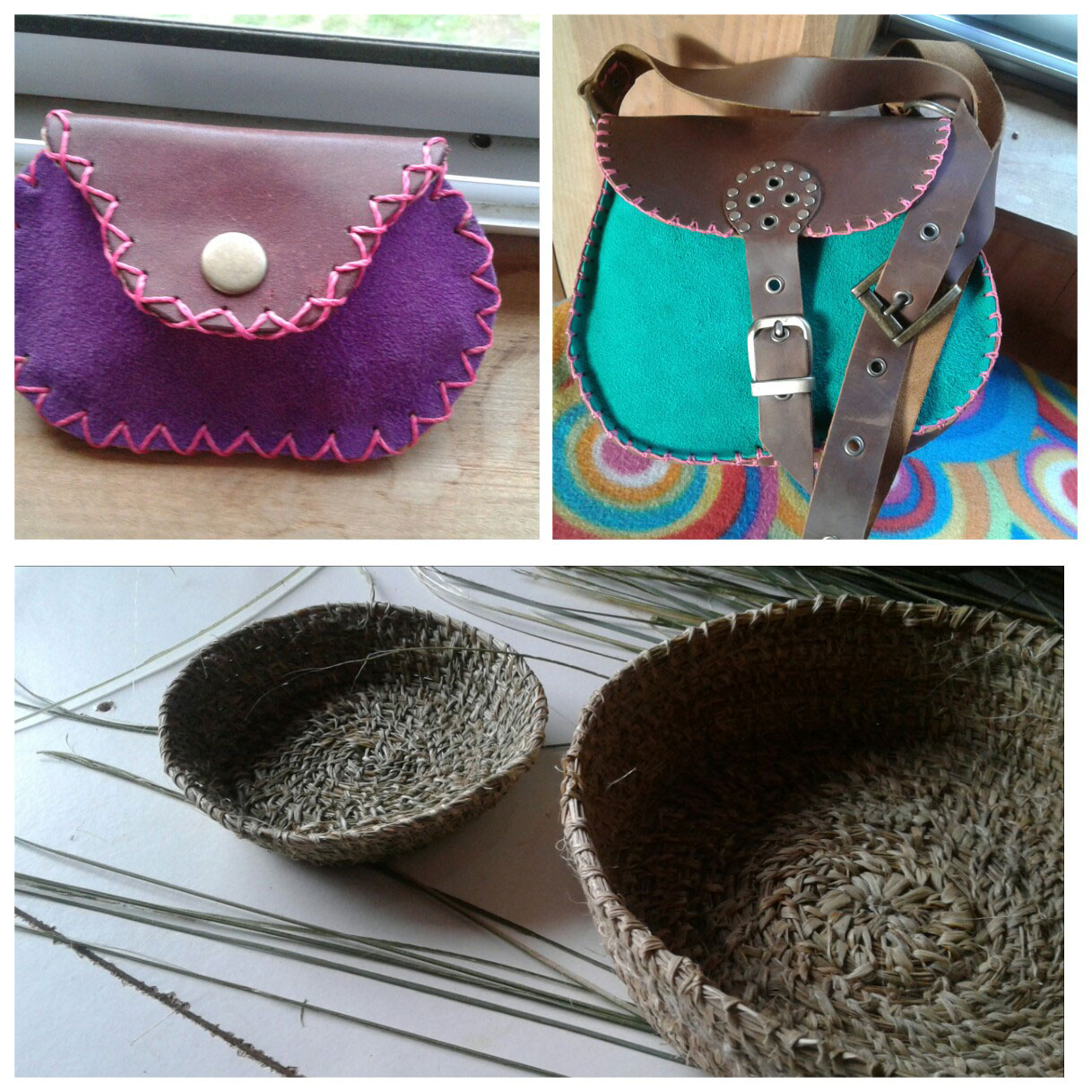
Ñocha
Ñocha is a local bush with long leaves that can be turned into fibers to weave dishes, baskets, and jewelry. The fibers are obtained by boiling the leaves of the plant in hot water. Once dry, the fibers can be separated out from the rest of the leaf and then used to create woven fabric by hand.
More information:
Follow us on Facebook
Where To Find Us
1. Artisanal Products
2. Community Fair Kiñe Newen Mapu
